Image of the Day Archives

For older Image of the Day pictures, please visit the Image of the Day archives. Pictured: NGC 2467.
You're Sixteen
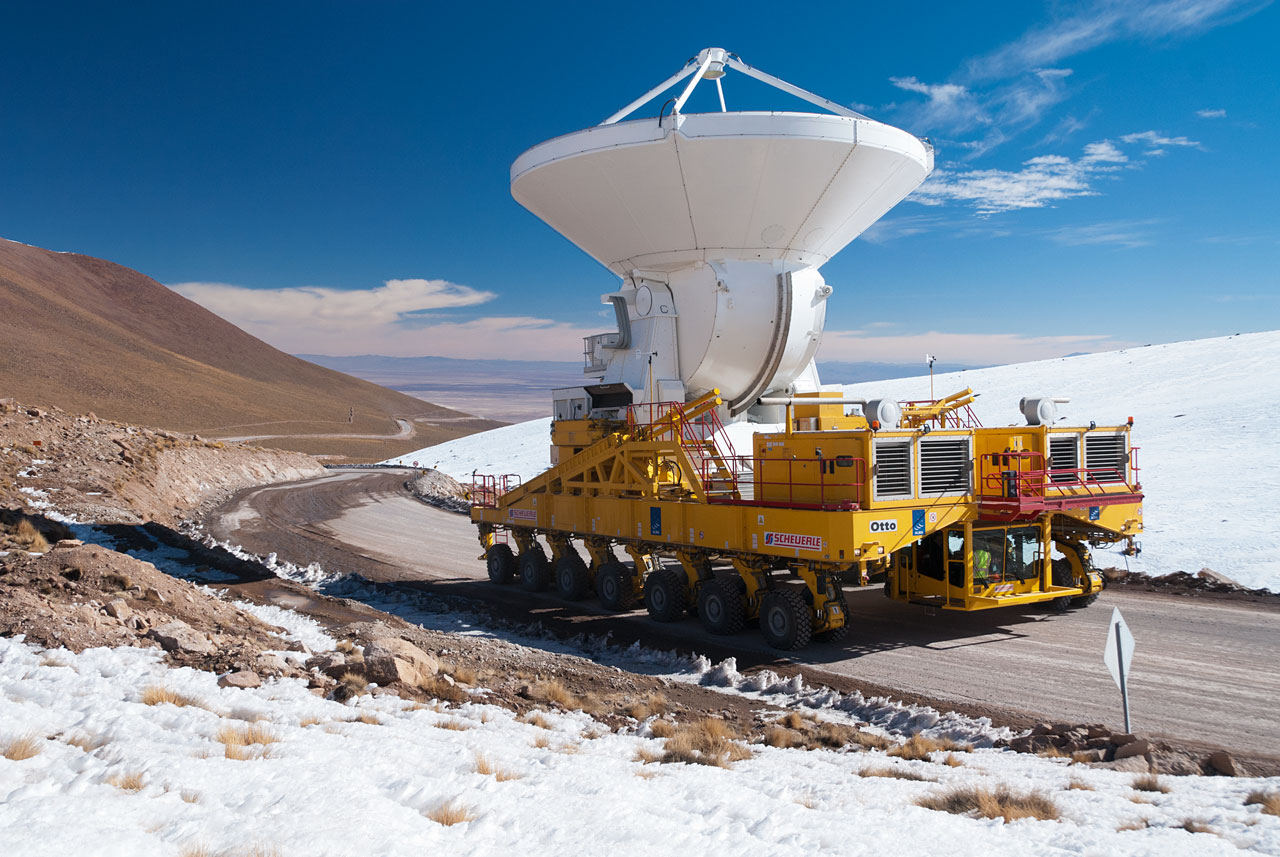
Monday, August 1, 2011: The first European antenna for the Atacama Large Millimeter/submillimeter Array (ALMA) crawls along a Chilean road on its way to the Chajnantor plateau, 5000 meters above sea level. Here, it joins antennas from the other international ALMA partners, bringing the total number to 16, meeting the minimum requirement to begin science observations. Soon, astronomers will begin conducting new scientific research with ALMA.
— Tom Chao
If You're Fond of Sand Dunes and Salty Air
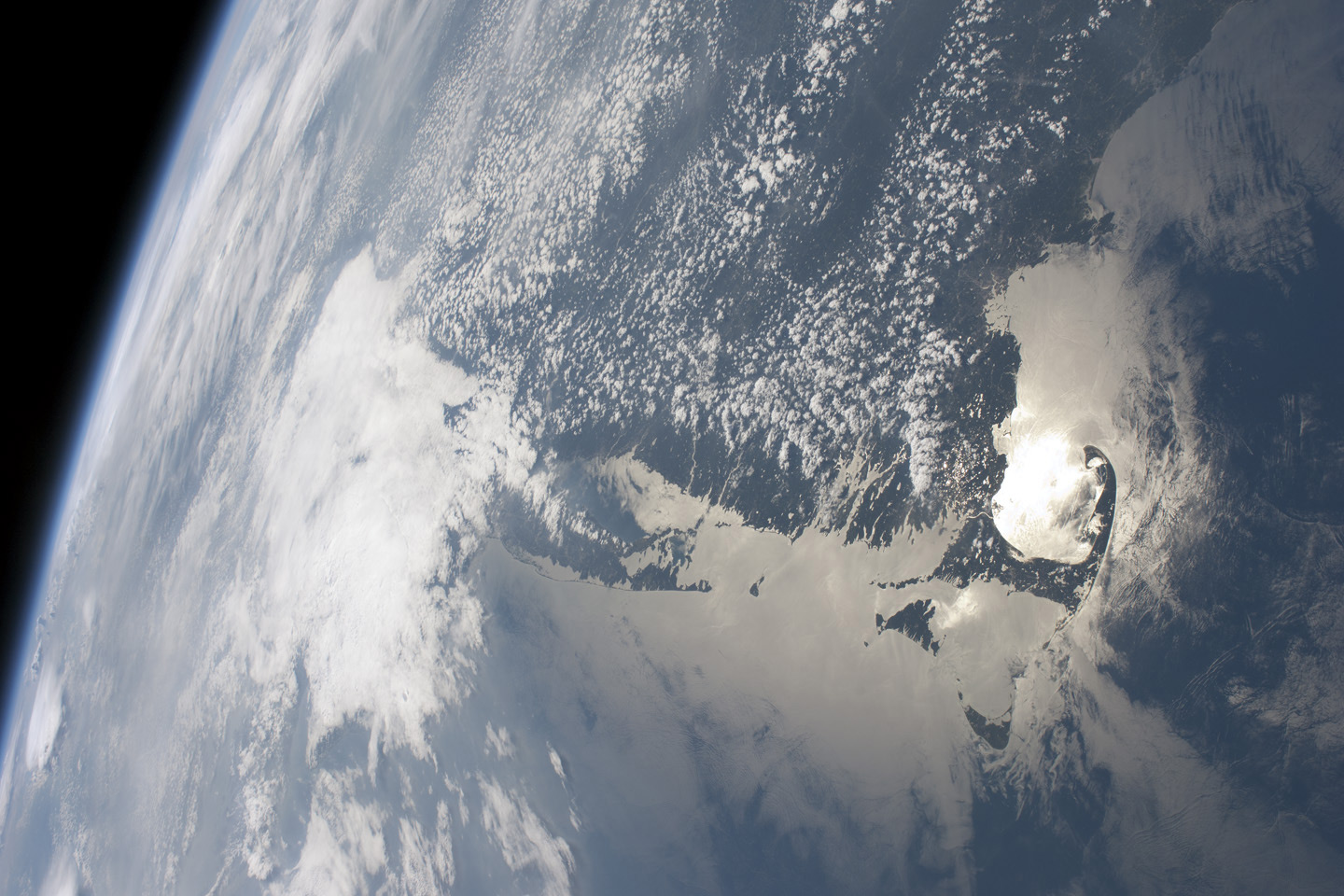
Tuesday, August 2, 2011: The crew of the International Space Station captured this image of sunglint on Cape Cod Bay, within the familiar "hook" of Cape Cod in Massachusetts, United States (center right). Sunlight reflecting off of a water surface directly towards the observer causes the phenomena of sunglint. Variations in the roughness of the water surface scatter the light, blurring the reflection and producing the silvery sheen of a sunglint area. To the left of Cape Cod in this image, the eastern end of Long Island, New York, is visible.
— Tom Chao
Two for the Price of One
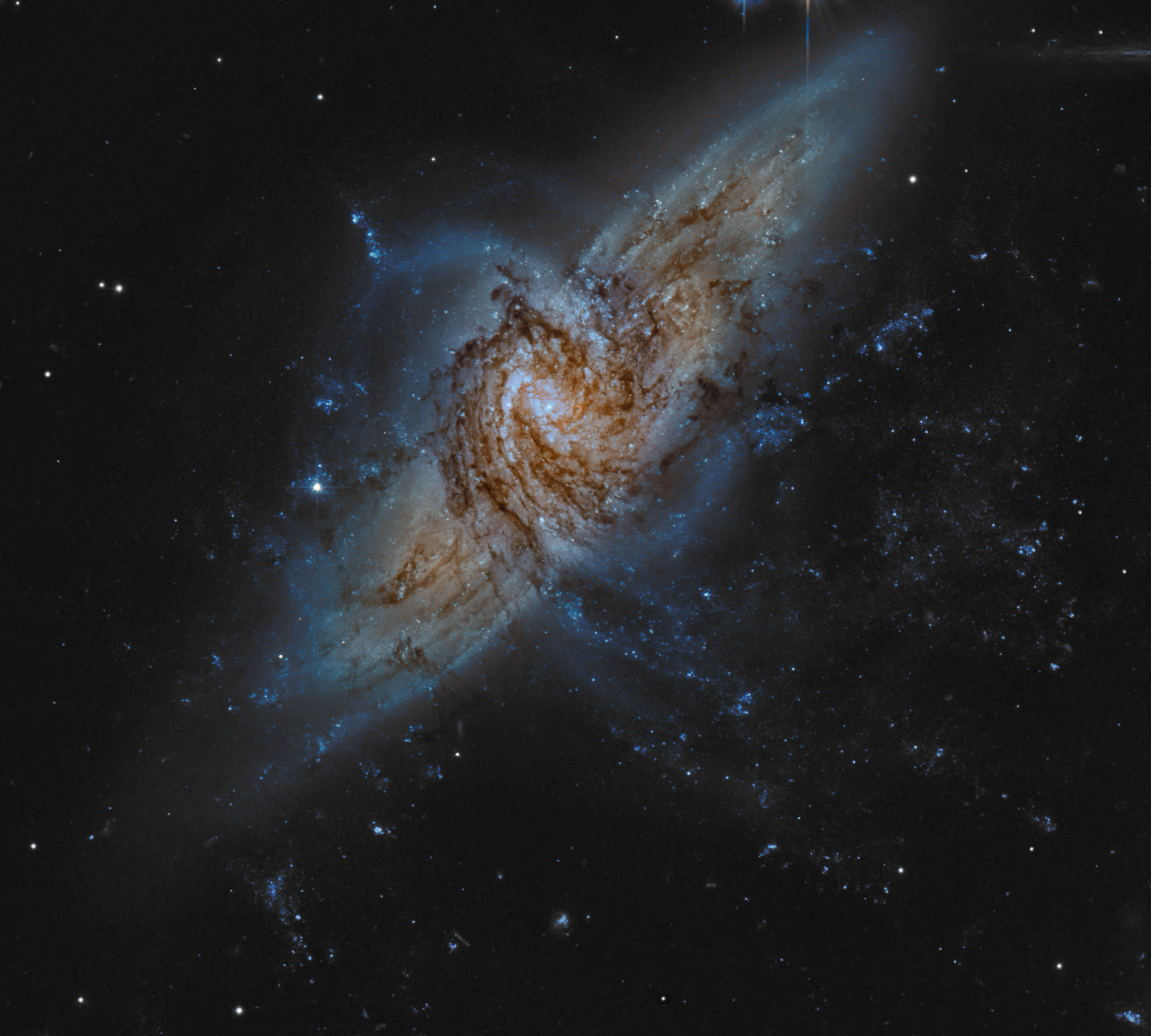
Wednesday, August 3, 2011: Not one, but two spiral galaxies make up NGC 3314. In the foreground, one galaxy appears face-on to us. The glow of the background galaxy brings out the dark swirls of interstellar dust in the foreground galaxy, a rare opportunity to explore the distribution of a galaxy's dust. NGC 3314 lies about 140 million light-years (background galaxy) and 117 million light-years (foreground galaxy) away in the multi-headed constellation Hydra.
— Tom Chao
Is This Not What You Expected?
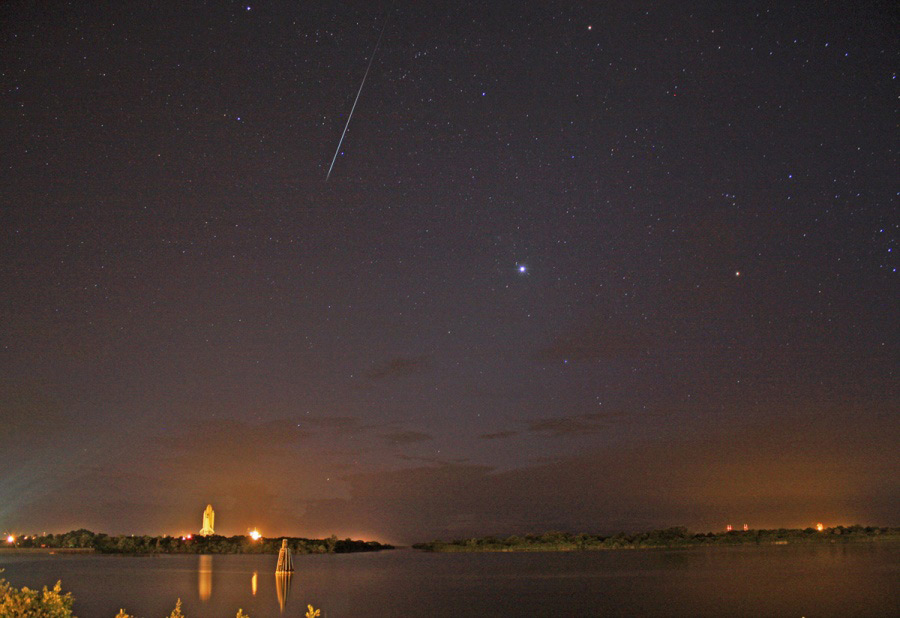
Thursday, August 4, 2011: The Turn Basin at NASA's Kennedy Space Center provided the setting for this dramatic image of a meteor streaking down, seemingly in the direction of space shuttle Discovery. At the time, the orbiter was crawling slowly toward launch pad 39A on August 4, 2009. However, the meteor streaking across the sky was likely not what you might expect, a Perseid. Though it fell during that annual meteor shower, its sky trail doesn't point back at the Perseid meteor shower's radiant (point in the sky from which meteors appear to originate).
— Tom Chao
Let Me See What Spring Is Like on Jupiter ...

Friday, August 5, 2011: NASA's Juno spacecraft will carry a plaque dedicated to astronomer Galileo Galilei to Jupiter, with a scheduled launch date of August 5, 2011. The plaque, provided by the Italian Space Agency, measures 2.8 by 2 inches (71 by 51 millimeters), is made of flight-grade aluminum and weighs six grams (0.2 ounces). The plaque contains a self-portrait of Galileo and a passage he wrote in 1610 of observations of Jupiter. Galileo's text reads: "On the 11th it was in this formation – and the star closest to Jupiter was half the size than the other and very close to the other so that during the previous nights all of the three observed stars looked of the same dimension and among them equally afar; so that it is evident that around Jupiter there are three moving stars invisible till this time to everyone."
— Tom Chao
Where Water Flows?
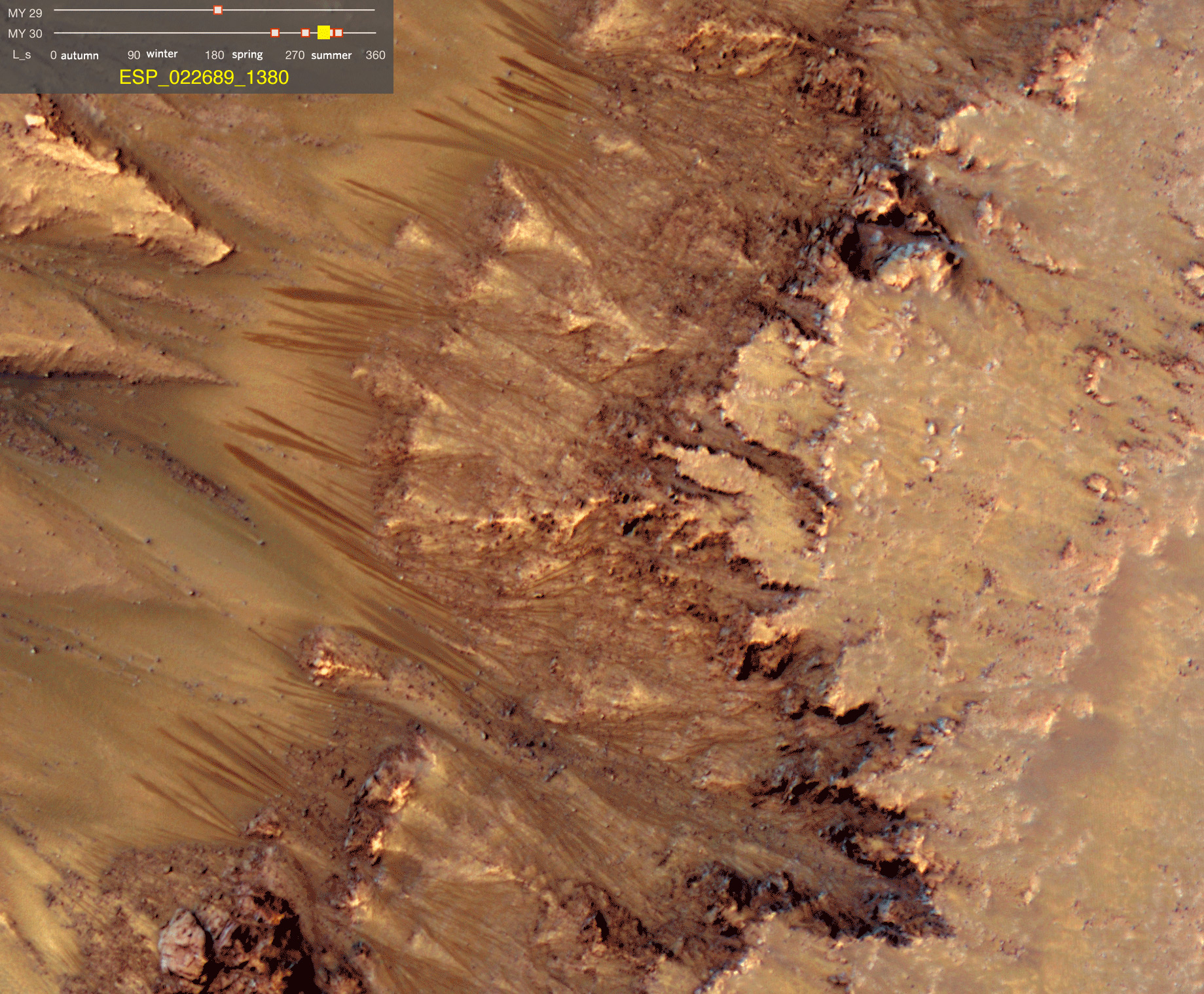
Monday, August 8, 2011: The diagonal, dark brown lines on the lighter-brown background in this image of Newton crater may provide evidence that liquid water currently flows on the surface of Mars. Comparison to other images of the same region taken over time by NASA's Mars Reconnaissance Orbiter show the lines (called recurring slope lineae) appearing. They gradually lengthen during warm seasons, and fade during cold seasons. Liquid brines near the surface might explain this activity, but the exact mechanism and source of the water are not understood.
— Tom Chao
Get the Space.com Newsletter
Breaking space news, the latest updates on rocket launches, skywatching events and more!
Juno
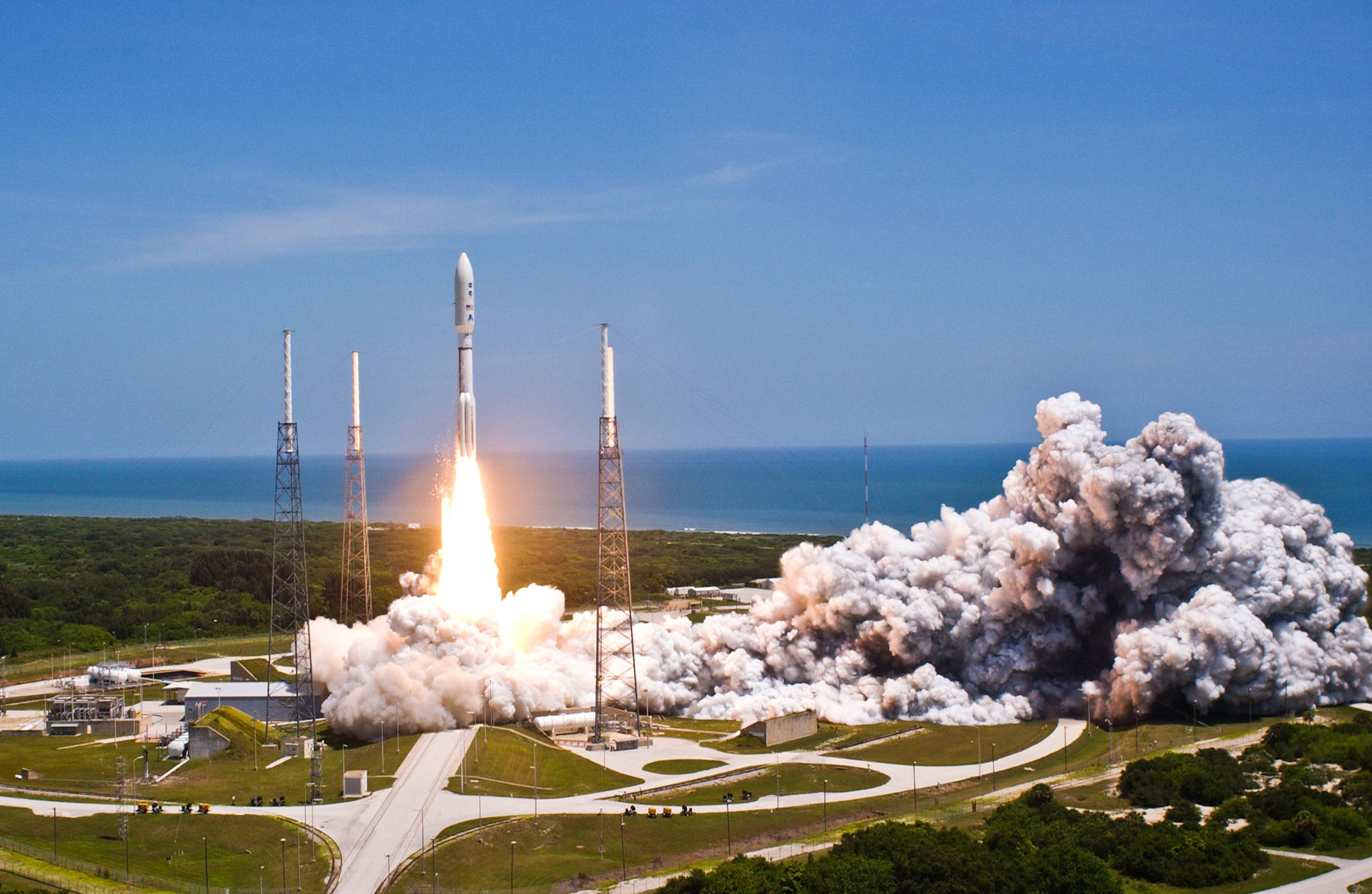
Tuesday, August 9, 2011: A United Launch Alliance Atlas V rocket blasts off carrying NASA's Juno mission from Kennedy Space Center on August 5, 2011. The solar-powered spacecraft will research Jupiter's origins, structure, atmosphere and magnetosphere, and investigate the existence of a solid planetary core. The launch marks the second of five launches for NASA in 2011.
— Tom Chao
Put a Ring on It
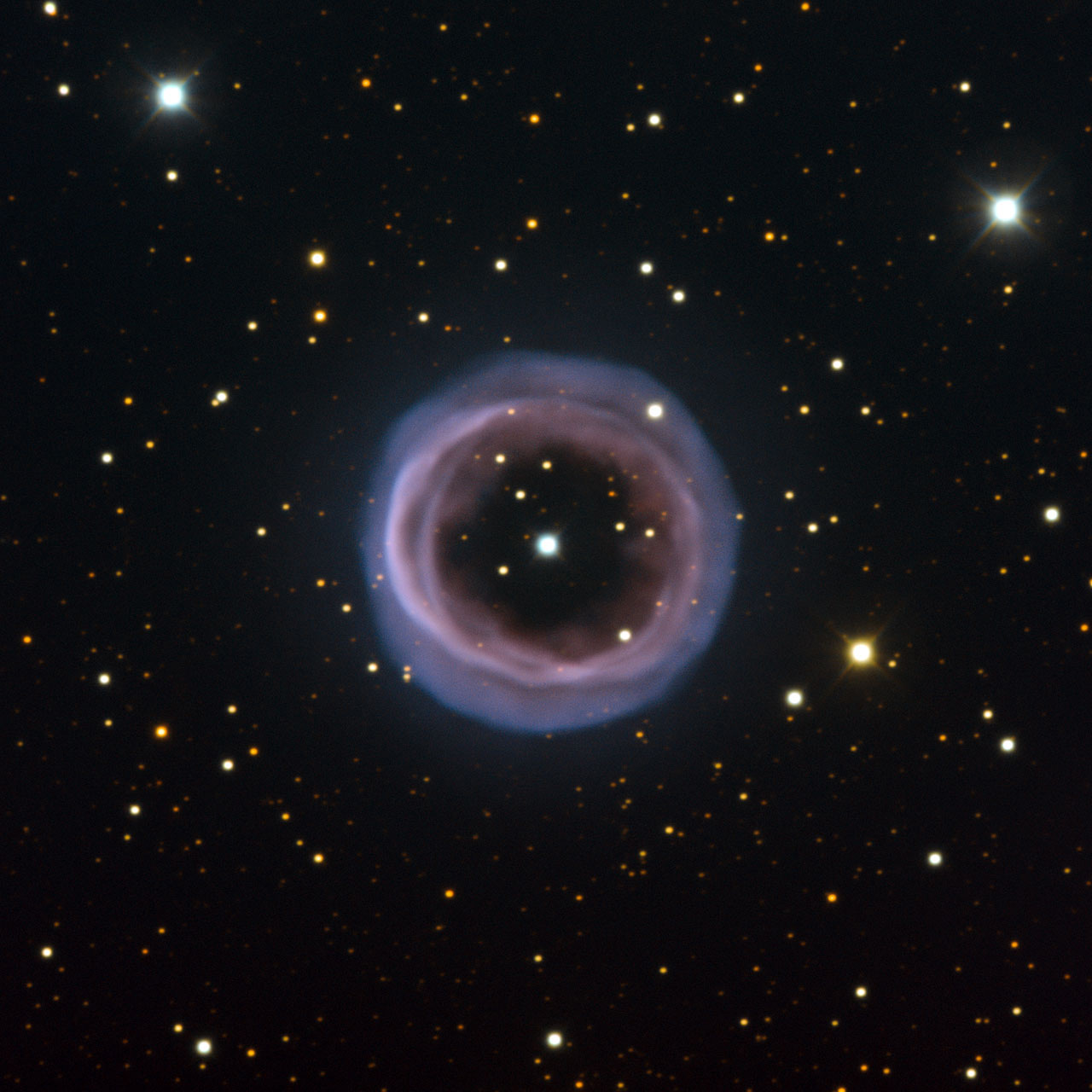
Wednesday, August 10, 2011: The Fine Ring Nebula seems to emanate from a binary star system. Observations suggest that the binary pair spins in a circle we see face-on from our vantage point, implying that the planetary nebula's structure aligns the same way. We are looking down on a torus (doughnut shape) of ejected material. Planetary nebulae form when some dying stars, after expanding into a red giant phase, expel a shell of gas as they evolve into white dwarfs. Most planetary nebulae are either spherical or elliptical in shape, or bipolar.
— Tom Chao
It Never Rains But It Snows
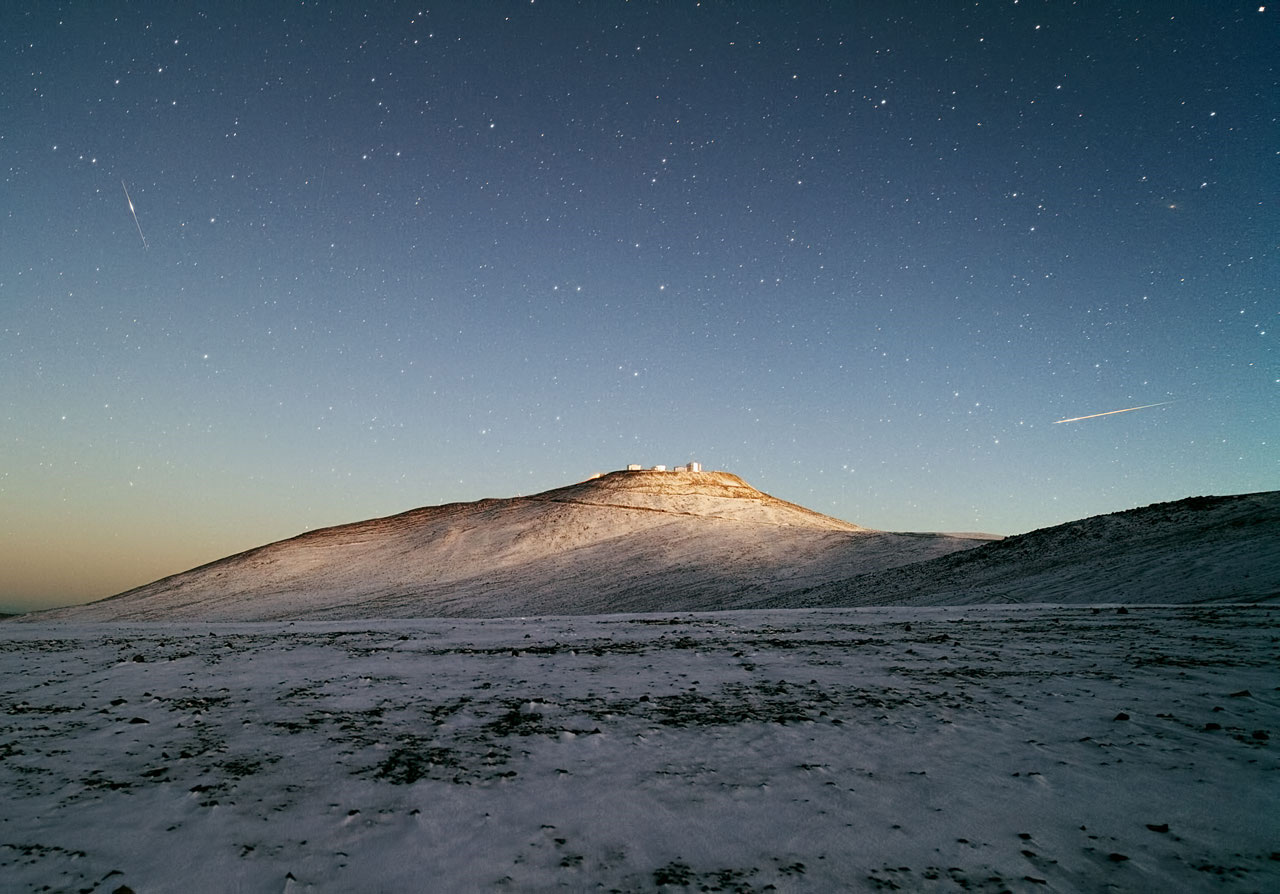
Thursday, August 11, 2011: Snow rarely falls in the Chilean Atacama Desert, where ESO's Very Large Telescope sits atop Cerro Paranal, a 8500-foot-high (2600-meter-high) mountain. The Atacama Desert is a very dry place with humidity often dropping below 10 percent and rainfall of less than 0.4 inches (10 millimeters) per year. This picture, taken shortly before sunrise, shows the landscape of the Atacama and the mountaintop domes of the VLT, and also the night sky. To the left of the VLT is a satellite trail, and to the right a meteor streaks through the sky.
— Tom Chao
The Wheel, It Goes 'Round
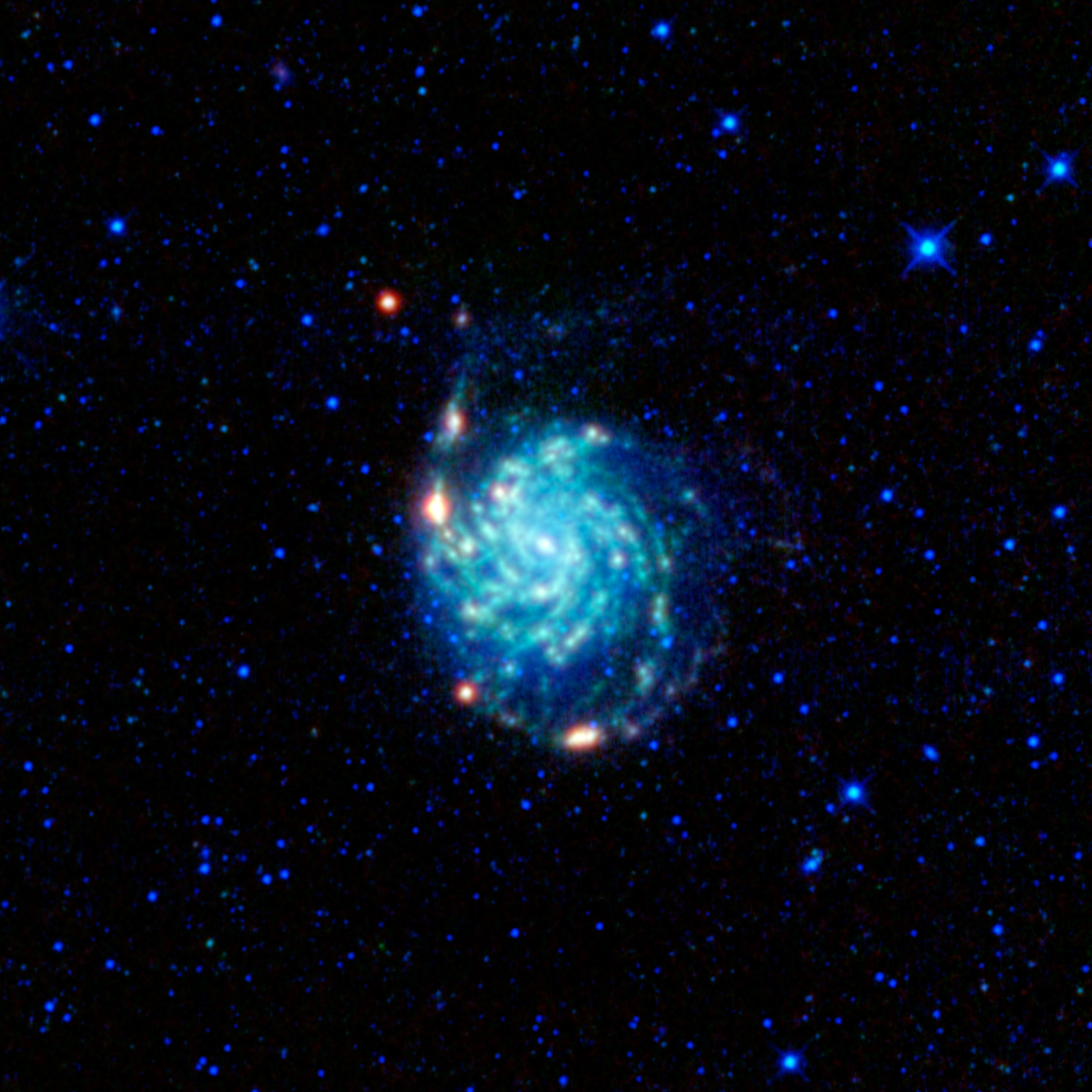
Friday, August 12, 2011: Charles Messier designated the object pictured here 101 in his catalog of fuzzy things in the sky that are not comets. Known sometimes as the "Pinwheel Galaxy," Messier 101 is a grand design spiral galaxy, a disk of hundreds of billions of stars with a small central bulge and prominent arms spiraling out from the center. Messier 101 is very large: At nearly 200,000 light-years across it is about twice the size of our Milky Way Galaxy. Its high levels of star formation and very well-defined spiral arms are likely caused by gravitational interactions with neighboring galaxies.
— Tom Chao
Join our Space Forums to keep talking space on the latest missions, night sky and more! And if you have a news tip, correction or comment, let us know at: community@space.com.










